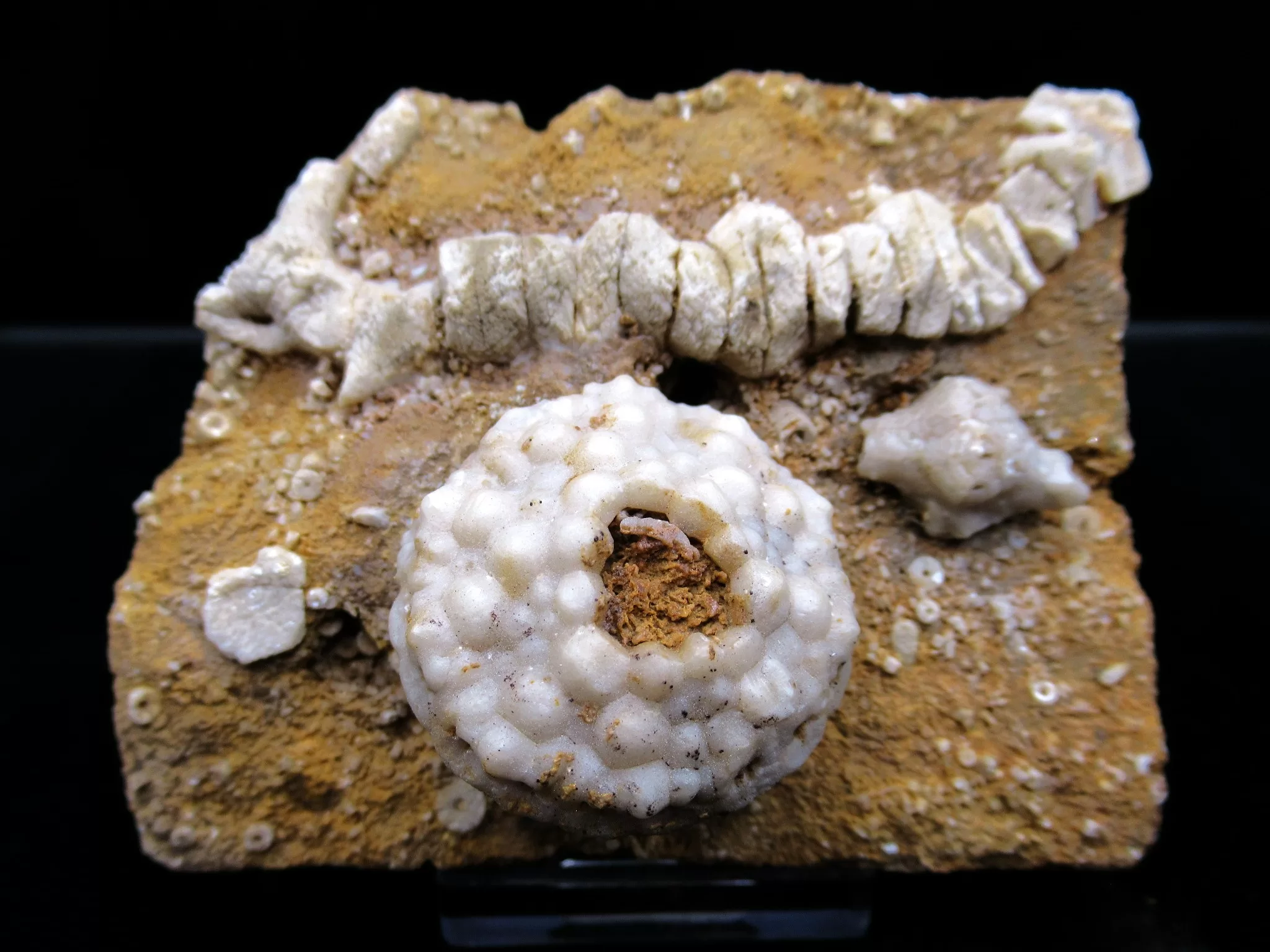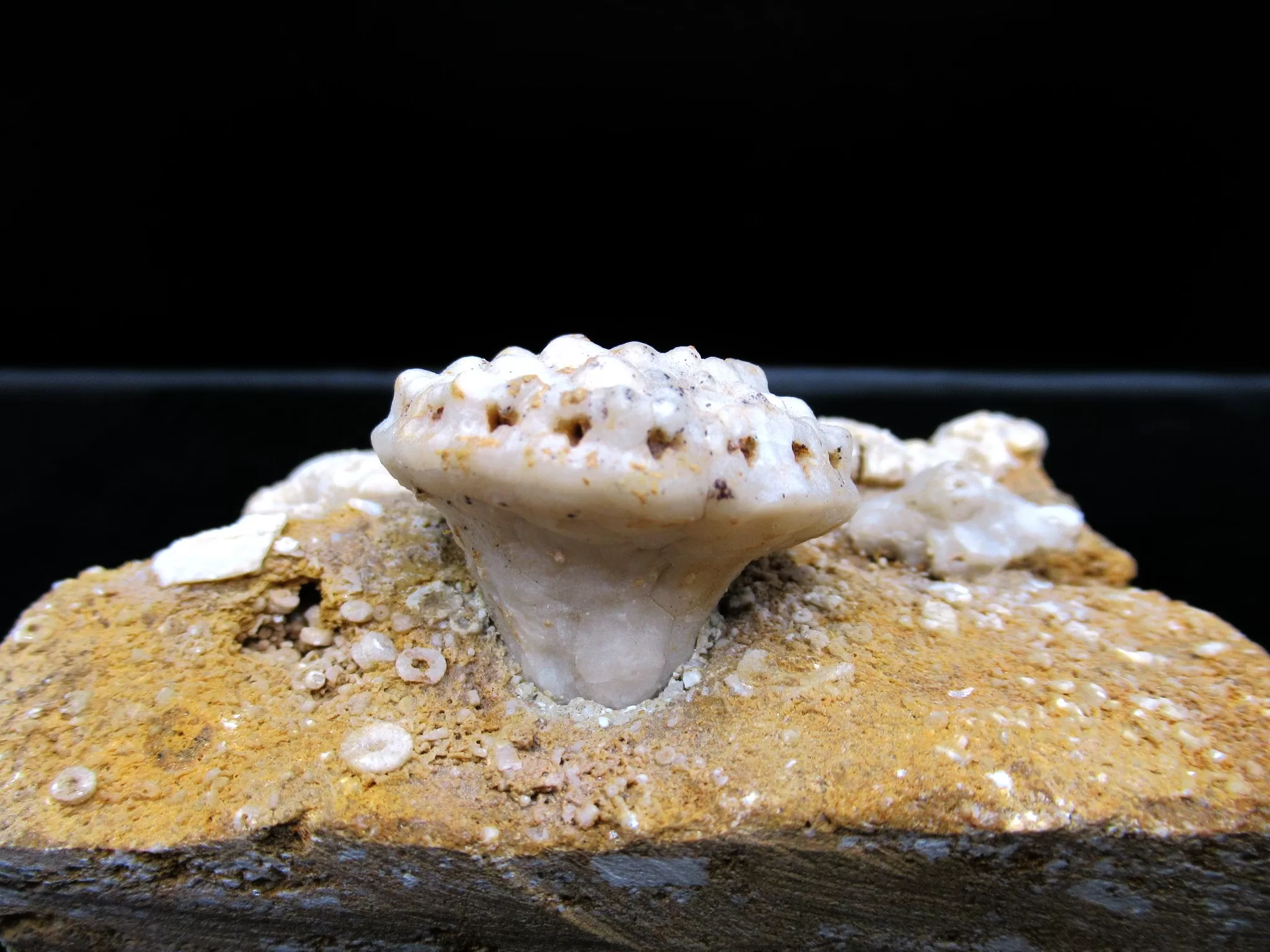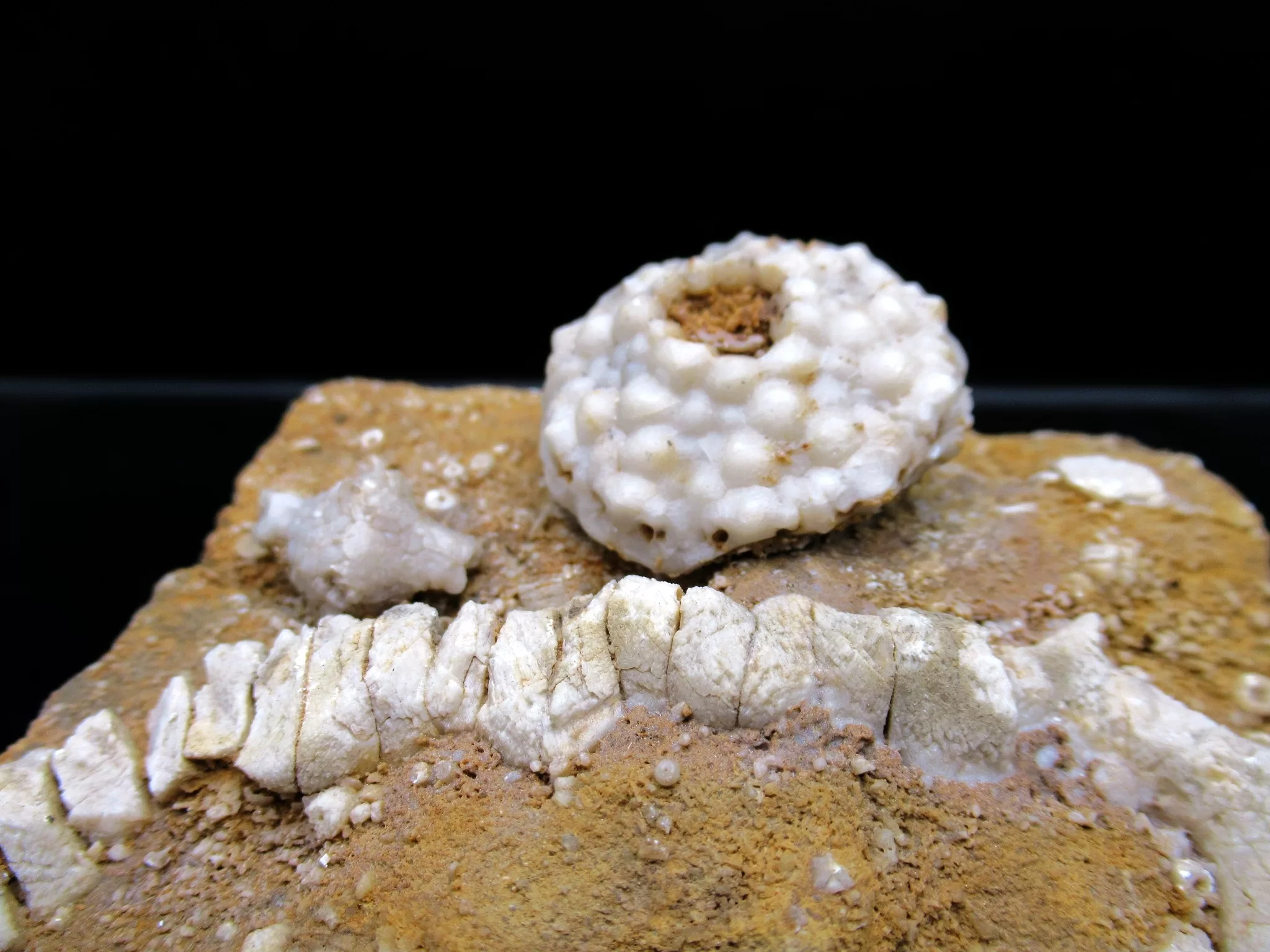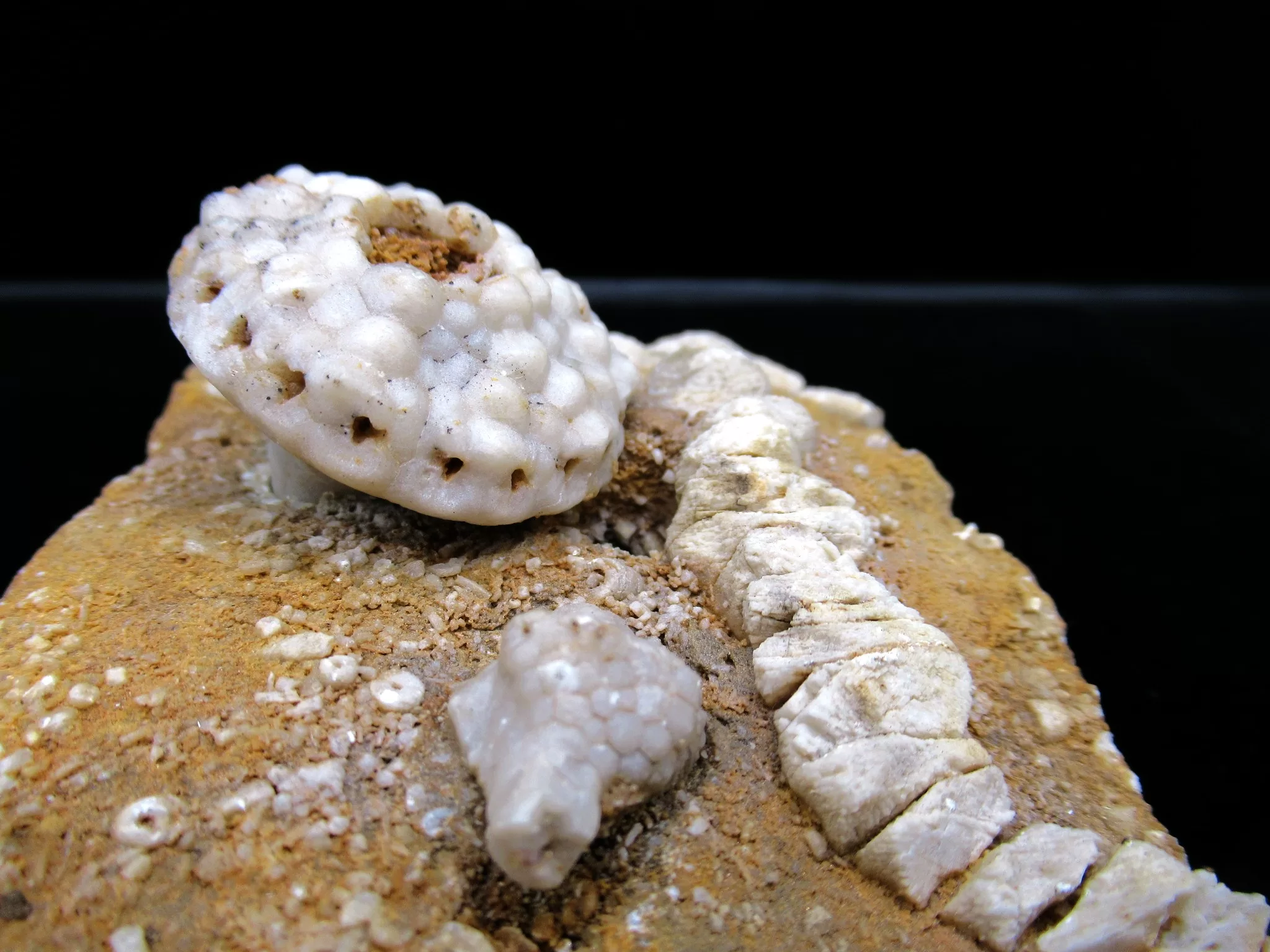Description
CRINOID FOSSILS FOR SALE – Burlington Formation
- Eutrochocrinus christyi & Eretmocrinus sp.
- Mississippian Age
- Burlington Formation
- Marion County, Missouri
- Specimen measures approx. 2.74″ x 3.35″
- More Crinoid Fossils for Sale
WHAT ARE CRINOIDS?
Crinoids are marine animals that make up the class Crinoidea. These marine animals attached to the sea bottom by a stalk in their juvenile form are commonly called sea lilies, while the unstalked forms, called feather stars or comatulids, are members of the largest crinoid order, Comatulida.
WHAT IS THE BURLINGTON FORMATION?
The Burlington Formation is a marine limestone, found in rock layers laid down during the Mississippian Period. Burlington Limestone is unusually course-grained, crystalline, crinoidal limestone. Its texture is sufficiently distinctive and persistent to permit recognition of the formation commonly on this basis alone. The Burlington Limestone is made of almost entirely on the remains of various fossils, by far the most important of which are crinoids. Burlington Limestone is present in nearly all major Mississippian outcrop regions in Missouri. It is known from Iowa to northwestern Arkansas and from western Illinois to western Kansas. It is present throughout Missouri, except in the Ozark uplift, where it has been removed by erosion.
HOW OLD IS THE MISSISSIPPIAN PERIOD?
(325-360 million years ago). The Mississippian Period was relatively short-lasting only 35 million years-and its fossil record is almost entirely marine (Thompson, 1982). This is due to the flooding of North America called the Kaskaskia transgression, which began during the Devonian Period (380-450 million years ago). This was interrupted at the end of the Devonian Period by partial regression, but deposition continued uninterrupted into the Mississippian Period. The Kaskaskia Sea reached its greatest extent about the middle of the Mississippian Period, and late Mississippian sedimentary rocks of the basins mark its recession. This recession also marks the boundary between the Mississippian and Pennsylvanian Periods in the North America (Clark and Stern, 1960). By: Richard Gottfried









